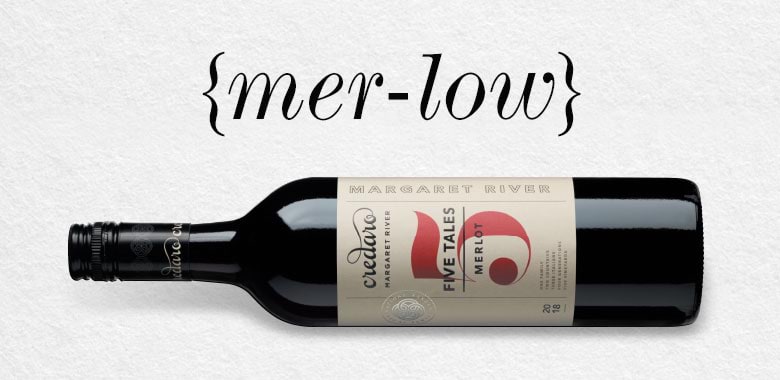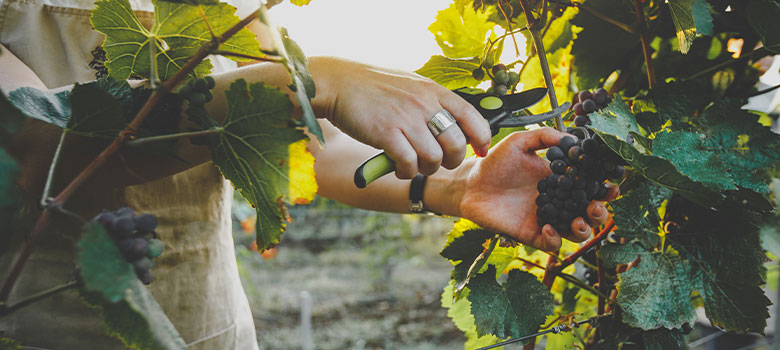
Wine
What is Merlot?
From humble beginnings to a top contender, Merlot has seen significant growth in a relatively short lifespan, becoming a red that's favoured across the globe. In fact, it’s the second most planted grape in the world behind the juggernaut that is Cabernet Sauvignon.
So, what is Merlot? What are its origins? Where does it grow best in Australia? And what foods pair best with Merlot? Join us as we answer all these questions and more.
Shop Merlot Wine
WHAT DOES MERLOT TASTE LIKE?
Merlot produces wines of diverse style. It’s typically less powerful than bold reds such as Shiraz and Cabernet Sauvignon and has flavours black cherry, raspberry, plum, cedar and milk chocolate.
WHAT ARE THE BEST MERLOT REGIONS?
Cool to moderate climates suit Merlot best, but it is planted in nearly every wine region in Australia.
WHAT FOOD DOES MERLOT PAIR WITH?
To match the moderate density tannins, go for slow-cooked or rustic style dishes like pasta, Mediterranean fare, tapas and tomato-based dishes.
HOW LONG CAN I CELLAR MERLOT FOR?
With its medium tannin and acidity, Merlot is more of an early-drinking wine and can be cellared for up to five years.
WHAT ARE THE PROFILE CHARACTERS OF MERLOT?
Australian Merlot is considered medium-bodied with medium tannins and is usually about 13% to 15% alcohol.
FACTS ON MERLOT
Merlot is responsible for one of the most expensive wines in the world – Château Petrus. Made from 100% Merlot grapes since 2010, this Bordeaux-produced wine is outstanding, with prices beginning at around $2,700 a bottle. In 2011, a Château Petrus from the 1961 vintage sold at auction for a record high of AUD $189,000.
WHERE IS MERLOT FROM?
Mouth-watering Merlot dates back to 1784 France, with the earliest reference coming from a note written by an official who used the term "merlau" to describe the best wines from the famed Bordeaux region.
MERLOT IN AUSTRALIA
Merlot is rumoured to have first been planted in 1923, although its story officially kicks off in 1965 when Merlot grapes were imported from California, not France. Merlot kept a low profile for decades until the early 1990s. The Aussie wine scene saw tremendous growth and the influx of winemakers began expanding into new varietals.
By 2016, Australia was crushing 112,000 tonnes of Merlot grapes, growing from just 1000 tonnes crushed in 1987. Today, Merlot remains one of the most popular red varieties with 8, 477HA planted to across Australia, however, it is mostly enjoyed as a blend.
The style of Merlot varies from region to region, with the climate and terroir a having huge influence on its characters. With its moderate-to-warm climate, the Hunter Valley produces Merlot that is medium-bodied and spicy (like its Shiraz), likewise Barossa’s climate brings out characters of cassis and plum.

BEST AUSTRALIAN MERLOT REGIONS
Moderate-to-warm climate Merlot regions
Cool climate Merlot regions
WARM CLIMATE VS COOL CLIMATE MERLOT
One of the most sensational aspects of Australian Merlot is that, when it comes to style, there are expressions for every taste. The essential distinction between warm and cool climate Shiraz manifests in their differing textures, weight and flavour profiles.
Since Merlot grown in warmer climates ripens more readily, the resulting wines will tend to feature fuller, riper dark fruit flavours and be more full-bodied and luscious. Such styles are considered the ‘classic’ expression of Australian Shiraz, made famous by Barossa Valley Shiraz – big-flavoured, plush and fruit-forward.
Cool climate Merlot on the other hand ripens more gently, leading to wines that are generally more medium-bodied and savoury. Due to the grapes being exposed to less heat, their skins are thinner, reducing or softening the tannins in the wine.
While sharing a similar flavour profile to their warm climate cousins, different varietal characters emerge – white pepper instead of black pepper, and red fruits rather than black – with more subdued herbaceous characters, resulting in wines are considered more restrained and even elegant in texture.
WHAT DOES MERLOT TASTE LIKE?
It is a classic medium-bodied red variety, loved for its smooth texture and ease of sipping. Today’s Merlots are better than ever with our winemakers being able to tease out more structure and length of flavour than ever before.
“It’s a favourite amongst many wine drinkers, purely because it is so easy to drink. Modern Merlots have so many interesting characteristics and can have wonderful length,” explains Adam Walls, Wine Selectors Tasting Panel Co-Chair, Wine Show Judge and 2019 Len Evans Tutorial Dux.
Coming in shy of full-bodied Shiraz, but carrying more weight that Pinot Noir, Merlot skirts a middle ground. Experience suggestions of plum, mulberry and fruitcake, raspberry, cherry, violet, spice and dried herb hints, maybe even chocolate and olive from the oak input.
Merlot tends to be soft, plump and juicy and ultimately worthy of plenty of attention. It's often regarded as a suitable entry-level red for white wine drinkers.
WHAT WINES IS MERLOT SIMILAR TO?
Sangiovese, Cabernet Franc and Tempranillo.
WHAT IS THE DIFFERENCE BETWEEN MERLOT AND CABERNET?
Merlot’s medium weight makes it an appealing red, even to the most discerning wine lover. It’s typically less powerful than bold reds such as Shiraz and Cabernet Sauvignon and tends to be slightly sweeter, fruitier on the palate. Most Merlot in Australia is crafted to be to enjoyed whilst young.
Australian Cabernet Sauvignon, on the other hand, is generally rich and robust with a mouth-drying taste with flavours of black currant, cedar, mint and plum. Their high tannin profiles mean they are can be cellared long-term – 10 years plus. Foodwise, they pair well with rich meat dishes, hard cheese and the classic favourite, lamb.
Compared to Cabernets, Merlots are generally much lower in methoxypyrazines. These compounds in grapes give raw, green, herbaceous characters that can be shrill and unpleasant, another reason for good Merlot’s friendly personality.
Merlot and Cabernet are often blended and Merlot’s historic role as a blending variety can compromise its individual identity. In its Bordeaux home, its early ripening characteristics act as insurance against the later ripening Cabernet Sauvignon, especially across difficult vintages. Merlot develops higher sugar levels and riper fruit characters weeks before Cabernet, and it’s planted much more widely in the Bordeaux region as a result. Its rich, supple personality tempers Cabernet’s more severe traits in a blend, and it usually doesn’t need nearly as much mellowing bottle age to be ‘gluggable’.
WHAT ARE THE BEST FOOD PAIRINGS WITH MERLOT?
Merlot is an excellent food-friendly wine thanks to its medium-body and acidity. Crack a bottle with a simple slow-cooked favourite or share with the family at the table while enjoying a tomato-based pasta dish like bolognese or a gnocchi creation.
It also pairs well with lighter meats like duck and pork, it’s perfect with pizza, charcuterie and mushroom-based dishes and can carry some curries like beef rendang. And, for lovers of lamb, it’s a good alternative to Cabernet.
Enjoy it with mild, mature cheddar cheese as part of a lighter grazing plate served with quince paste, and other nibbles for a picnic lunch or an easy dinner on the deck.
Merlot wine paired with pizza
Bocconcini, cherry tomato and basil pizza
Chorizo, Mediterranean vegetables and goat curd pizza
Merlot wine paired with meat based recipes
Meatloaf with tomato sauce
Massimo Mele's Paccheri Genovese
Make a move for Merlot - check out our range of this loveable varietal and save along the way!